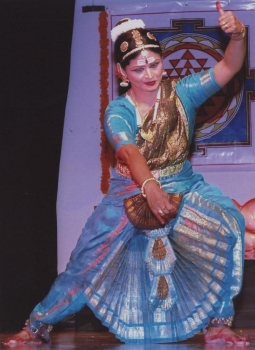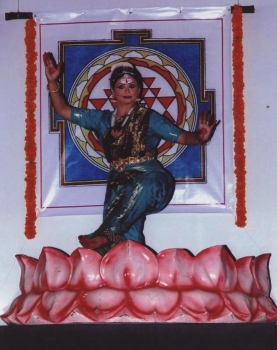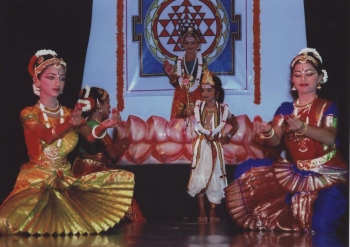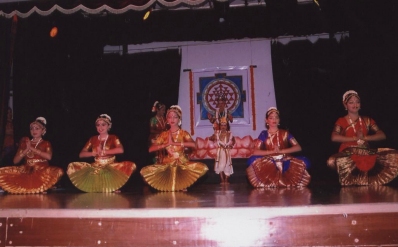
|   |

|   |
Performance based on the science of Tantra and the art of Natya May 21, 2011 Padmaja Suresh presented a Bharatanatyam program based on her doctoral thesis, The Science of Tantra and the Art of Natya, a co-relative study, at the Bharatiya Vidya Bhavan on April 30, 2011 at Bangalore.   As a thesis based program, Padmaja Suresh first presented a dance number denoting the origin of natya, linking it to present day worship of Ganesha, the Vedic and Agamic puja, prana –pratishta (invoking the divinity) in the deity. The dancer is a kind of temple Tantri as well when the divine spirit within her and outside evokes the dance which can lead to bliss, as the sages propound. Couplets from Vignyana Bhairava Tantra (the treatise referred to very often by the Tantrik Yogi and Natya Shastra scholar Abhinavagupta in his Tantraloka), poetry from Shaiva-Siddanta Guru Tirumoolar's Tirumandiram and Auvaiyar have been taken along with Vedic hymns and relevant verses from Muthuswami Dikshitar's songs. There was an attempt to show some of the mudras esoterically employed in Tantra to co-relate with the natya hastas. The second number was Dikshitar's Kamalamba Navavarnam, a devotional ode to the mother also denoting Tripuraadi Chakreshwari, the seven Yoginis ruling the energy centers (chakras of the subtle body) as per the greatest Tantra. Lalita Sahasranamavali and their Beejaksharamantras were depicted along with co-related movements in Bharatanatyam. It is iccha, janana, kriya shakti that gives potent force to all the deities in their feats, like Krishna's Kaliyamardanam or Skanda's Padmasuravadam, Shiva drinking poison, Rama lifting Shiva's bow or Anjaneyar's strength. Shakti is the Hrim who invigorates Shiva. She is the Bindu that pulsates. Nada, Nadanta, Nada-bindu, Nada-Bindu-Kala...all emerge and dissolve in HER. The last number by Padmaja was the Kavutvams, the syllables recited in them being typically different when compared to other nattuvangam syllables, the Kavutvams especially a speciality of Tanjore, the Quartet being themselves initiated into Srividya Upasana by Muthuswami Dikshitar. This was followed by Ardanareeswara shloka of Adi Sankara, some of which were presented along with Soundaryalahiri shlokas, which elucidate the Sri Chakra symbol, the divine union of Shiva and Shakti and the rise of Kundalini, the serpent power. Truly, natya has Yantra in the body, Mantra in the music and Tantra in the action.   The students of Padmaja presented Naada Bindu and Yerumayil, two Tirupugazhs. Padmaja was accompanied on the vocal by Balasubramanya Sharma, violin by Madusudan, mridangam by Srihari and nattuvangam by Prasanna Kumar. Art experiences or aesthetics as understood by various schools give one an insight into the goal of drama but how is this process achieved? That is, the technical growth and transition of emotional states and transitory moods. The essential pre-requisites for this become an incessant quest for an artiste. A Tantra Sastra paradigm (Natya can also be called as one such paradigm) exemplifies conception of supreme personality of God, the dual aspect when the God himself becomes the Universe beyond Purusha and Prakriti - the complete, whole, an undivided 'one.' The dancer would become the dance or the danced. She exemplifies both the Advaitic truth and the Dvaitic world. Several books on Tantra have been written which interestingly expand the scope of the subject and obliterate unwanted premonitions. The relation between Natya and Tantra is similar to Shakti and Shiva. The consciousness and energy play with each other, both are interdependent. |